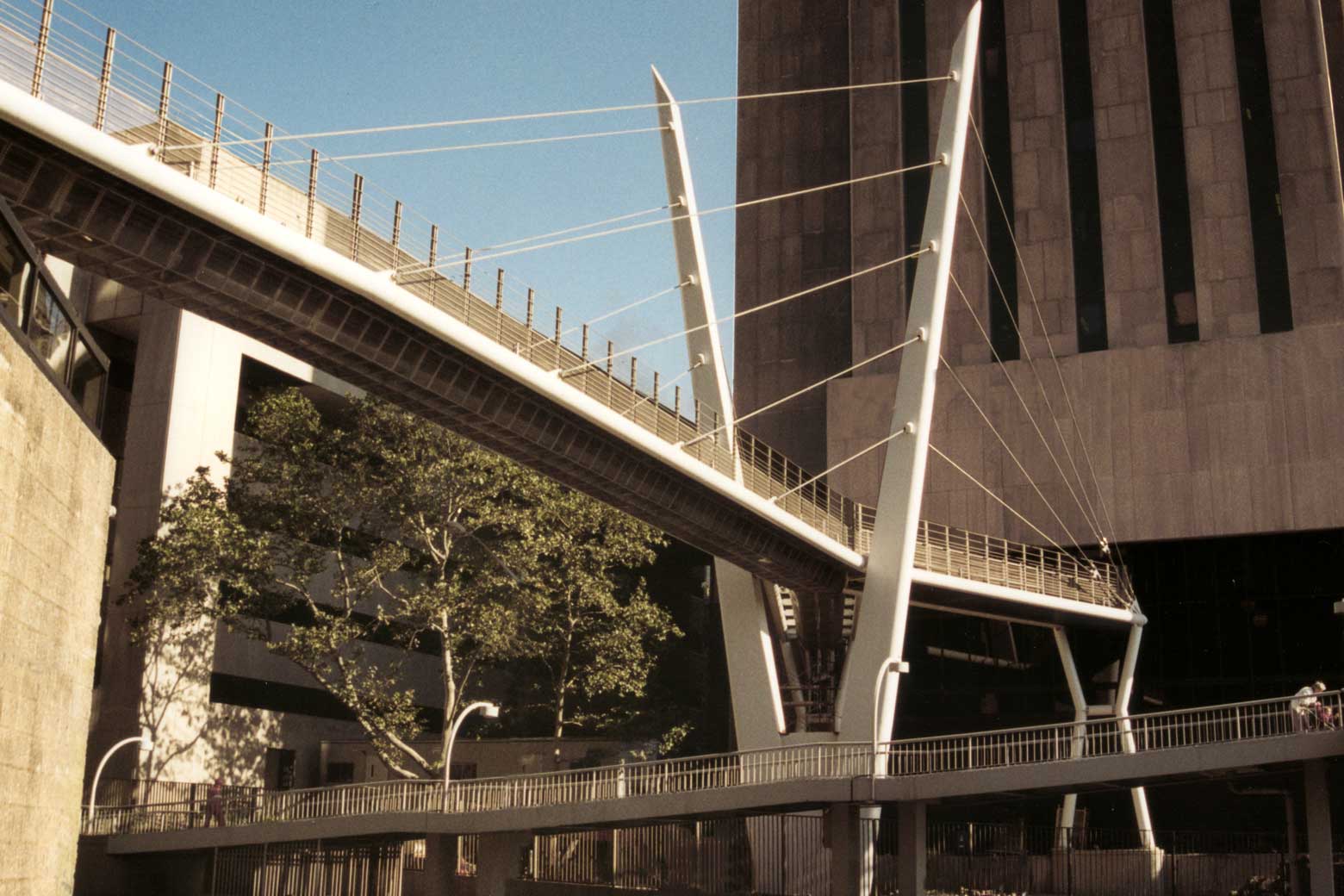
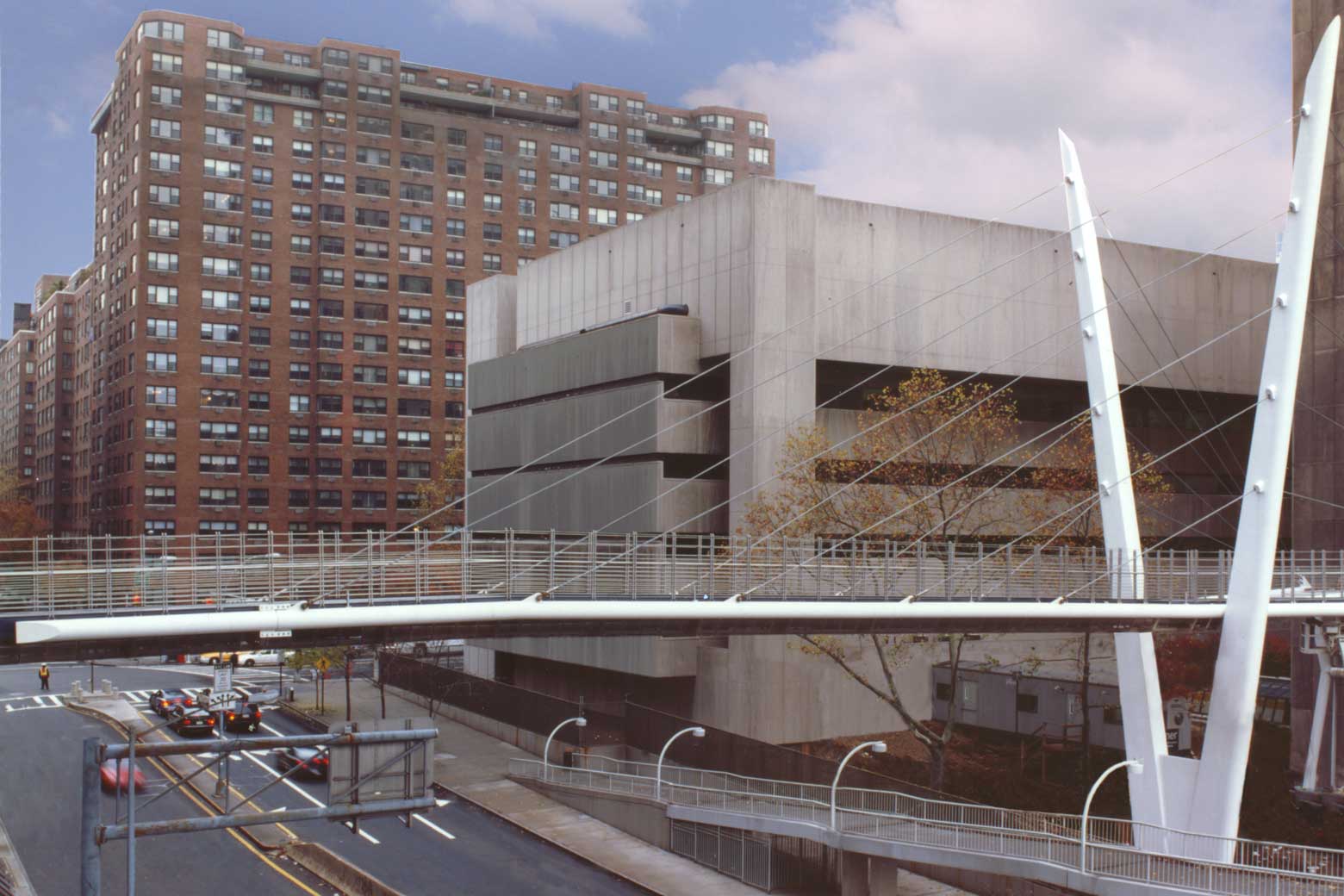
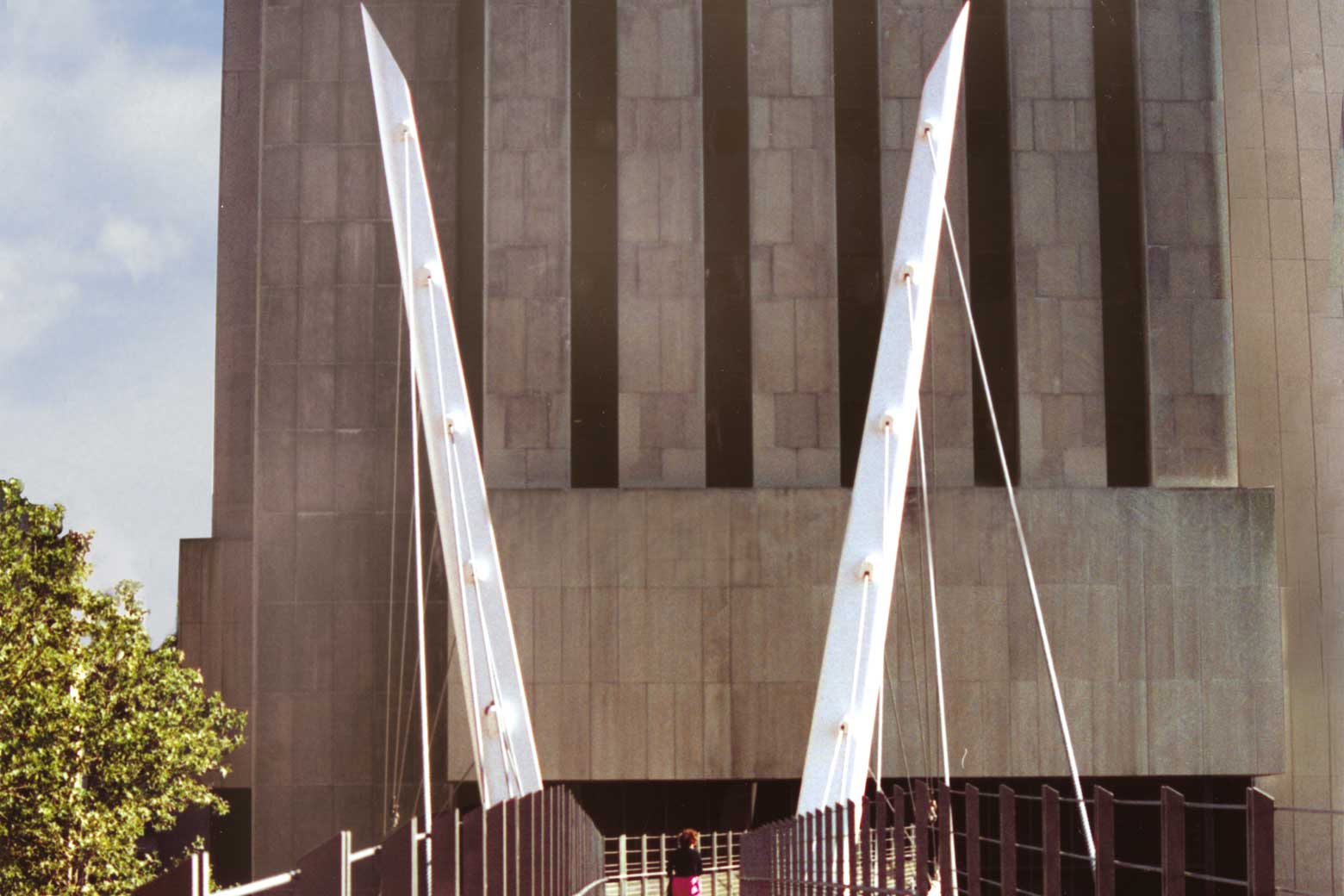
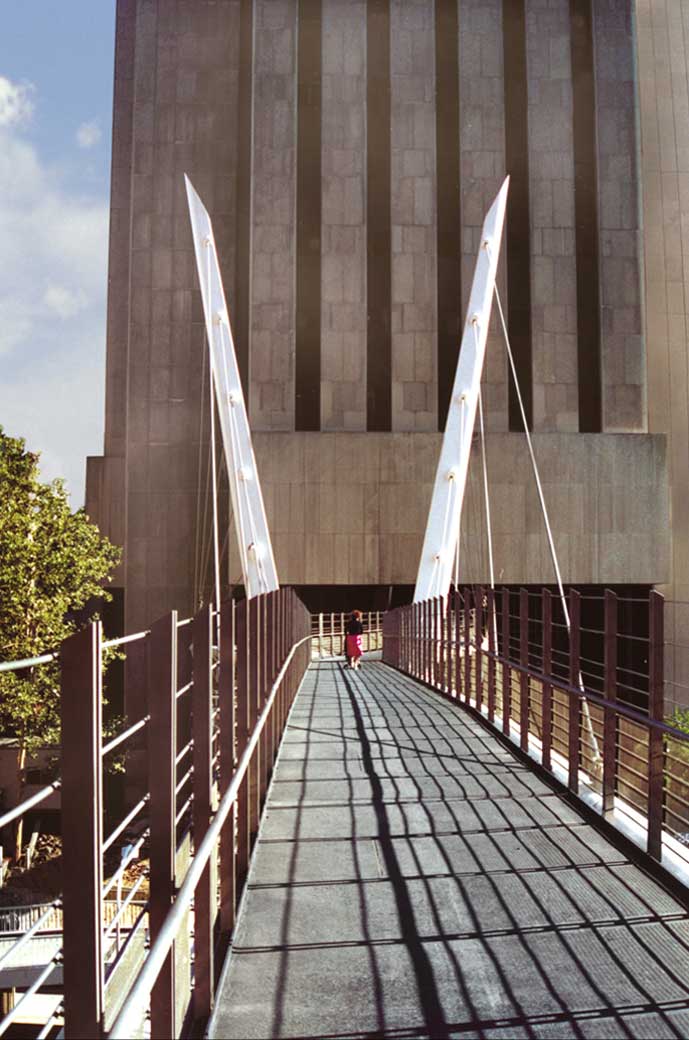
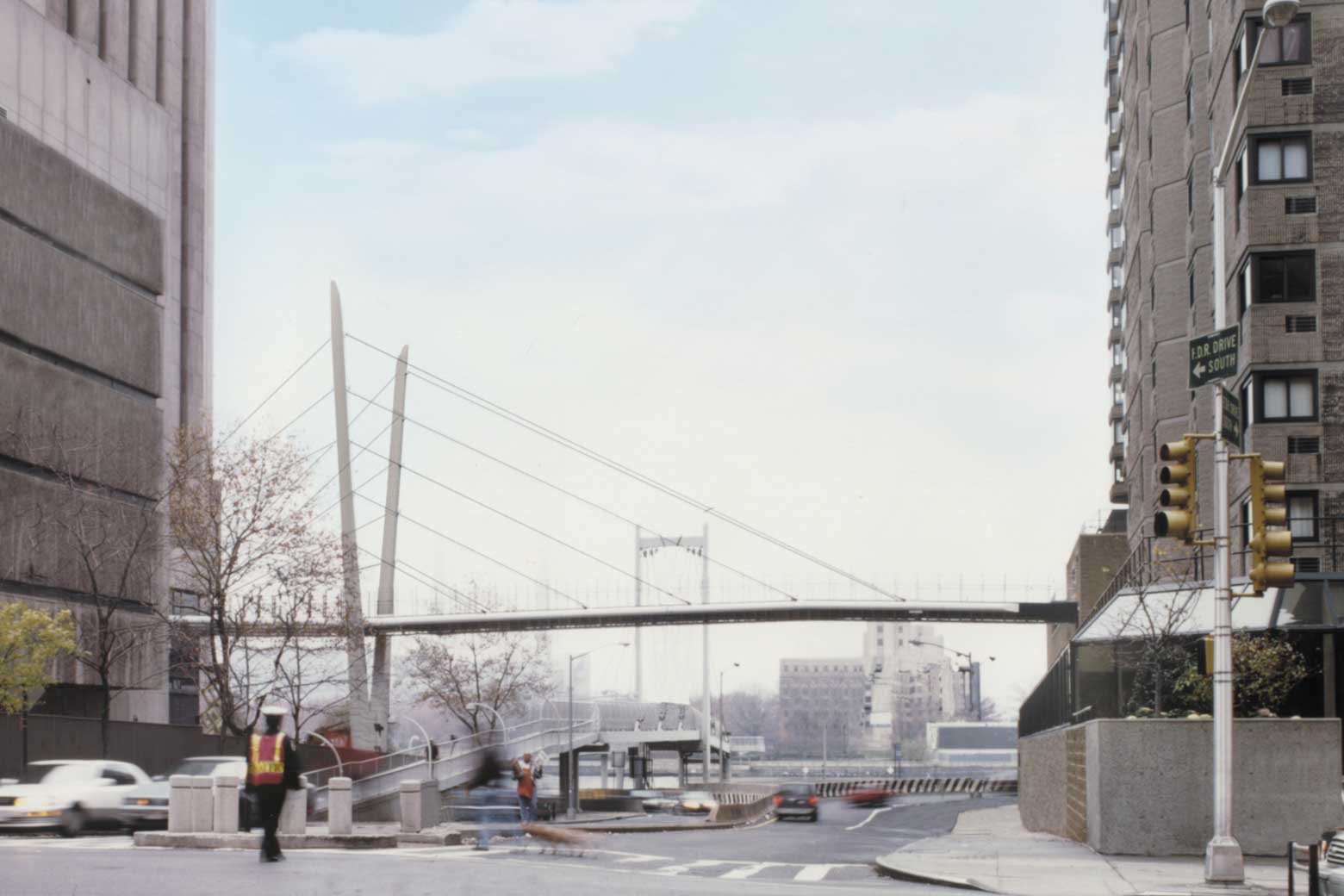
THE ROCKEFELLER UNIVERSITY
PEDESTRIAN BRIDGE
The cantilever is virtually unused in bridge construction, yet, for this condition it allowed us to avoid a costly foundation on the south side of East 63rd Street, reducing costs so dramatically that it made the project a reality. A cable-stayed solution, it is asymmetrical in form giving a dynamic appearance against the eastern sky. But the exact composition is related to the specificity of the pedestrian connections and the expression of the inherent forces. Its Y-shaped plan relates to the single code-required passage across the street that later splits pedestrian circulation from the steam lines. Once established in plan, the V-shaped tower most directly solves the physical forces, but it also creates an open feeling of floating when walking across the street.
The bridge changed life dramatically for the university community, allowing safe passage for home to campus, but given equal measure is the dual experience of the public who see the bridge from afar and below. Thus, the utility connections are held in an elegantly designed girth below the walking surface.
Project Info
Location
New York, NY
Completion
2000
Client
The Rockefeller University
Consultants
TBD.
Photographer
TBD.
Awards
2003 Society of American Registered Architects, National Council, Special Recognition
2003 American Institute of Architects, New York Chapter, Architecture Award
2002 ESD The Engineering Society, Design Award
2001 Business Week/Architectural Record, Design Award
2001 American Institute of Architects, New York State, Design Award of Merit
2001 American Society of Associate Engineers Award
